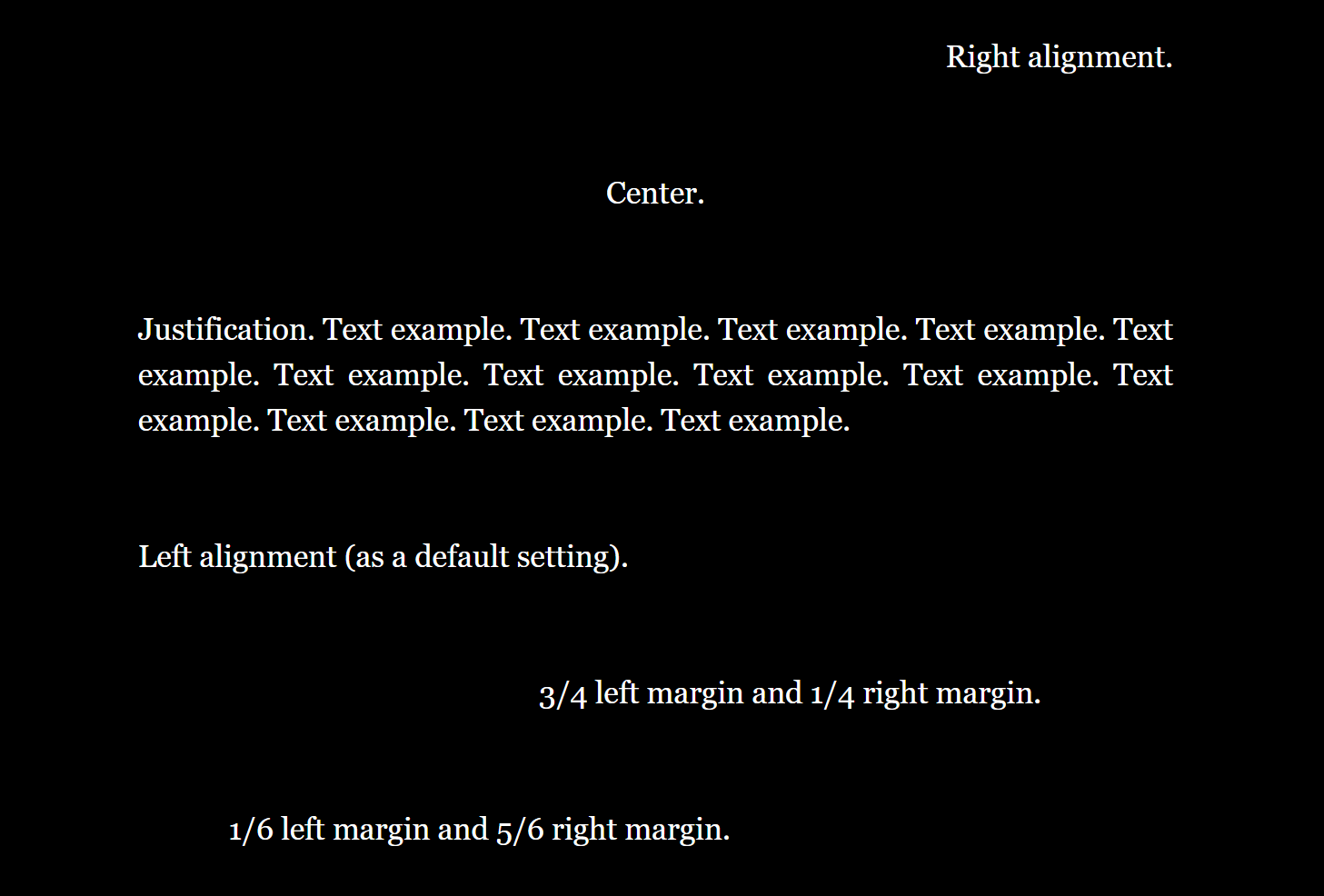Alignment
Text alignment markups¶
Text alignment markups allow you to align the text under the markup tag. The left alignment is a default setting. The particular settings work as long as they meet another alignment tag. Please, have a look at the following scheme:
A scheme of using text alignment markups
Center alignment markup
It’s time – Max says to you. There are lots of thoughts running through your head.
It’s time – Max says to you. There are lots of thoughts running through your head.
It’s time – Max says to you. There are lots of thoughts running through your head.
It’s time – Max says to you. There are lots of thoughts running through your head.
It’s time – Max says to you. There are lots of thoughts running through your head.
It’s time – Max says to you. There are lots of thoughts running through your head.
It’s time – Max says to you. There are lots of thoughts running through your head.
It’s time – Max says to you. There are lots of thoughts running through your head.
It’s time – Max says to you. There are lots of thoughts running through your head.
| Alignment | Code |
|---|---|
| left | <== |
| center | =><= |
| right | ==> |
| justification | <==> |
| mixed | ===><= |
Example
==>Right alignment.
=><=Center.
<==>Justification. Text example. Text example. Text example. Text example. Text example. Text example. Text example. Text example. Text example. Text example. Text example. Text example. Text example.
<==Left alignment (as a default setting).
===><=3/4 left margin and 1/4 right margin.
=><=====1/6 left margin and 5/6 right margin.
Result

Center HTML markup
In order to centre various elements (texts, images, videos, etc.) on a page, you can use an HTML markup. <center>your text, images and other elements</center> Sometimes using this markup will be a better solution (in Twine you can style it using the CSS language).
The (align: ) macro¶
The (align: ) macro allows you to align only a selected fragment of your text. It is used in the same way as text alignment markups.
Example
(align: "=><=")[It’s time – Max says to you.]
There are lots of thoughts running through your head. You are wondering
whether you really want to do it. A parachute jump has always been a challenge to you.Result

Column markups¶
Column markups allow you to break a page into columns, for example, in a newspaper there is one page and several columns of text. Column markups work in the same way as text alignment markups.
| Meaning | Code |
|---|---|
| indicates the size of a column in relation to other columns (depending on the number of applied characters) | | |
| indicates the size of column margins (depending on the number of applied characters) | = |
| indicates the end of the column break | |==| |
Example 1
|=Column 1. Example text. Example text.
=|=Column 2. Example text. Example text.
===|===Column 3. Example text. Example text.
|==|End of the column break on a page.Result

Example 2
|=Column 1. Example text. Example text.
=|||=Column 2. Example text. Example text.
=====|=Column 3. Example text. Example text.
|==|End of the column break on a pageResult
